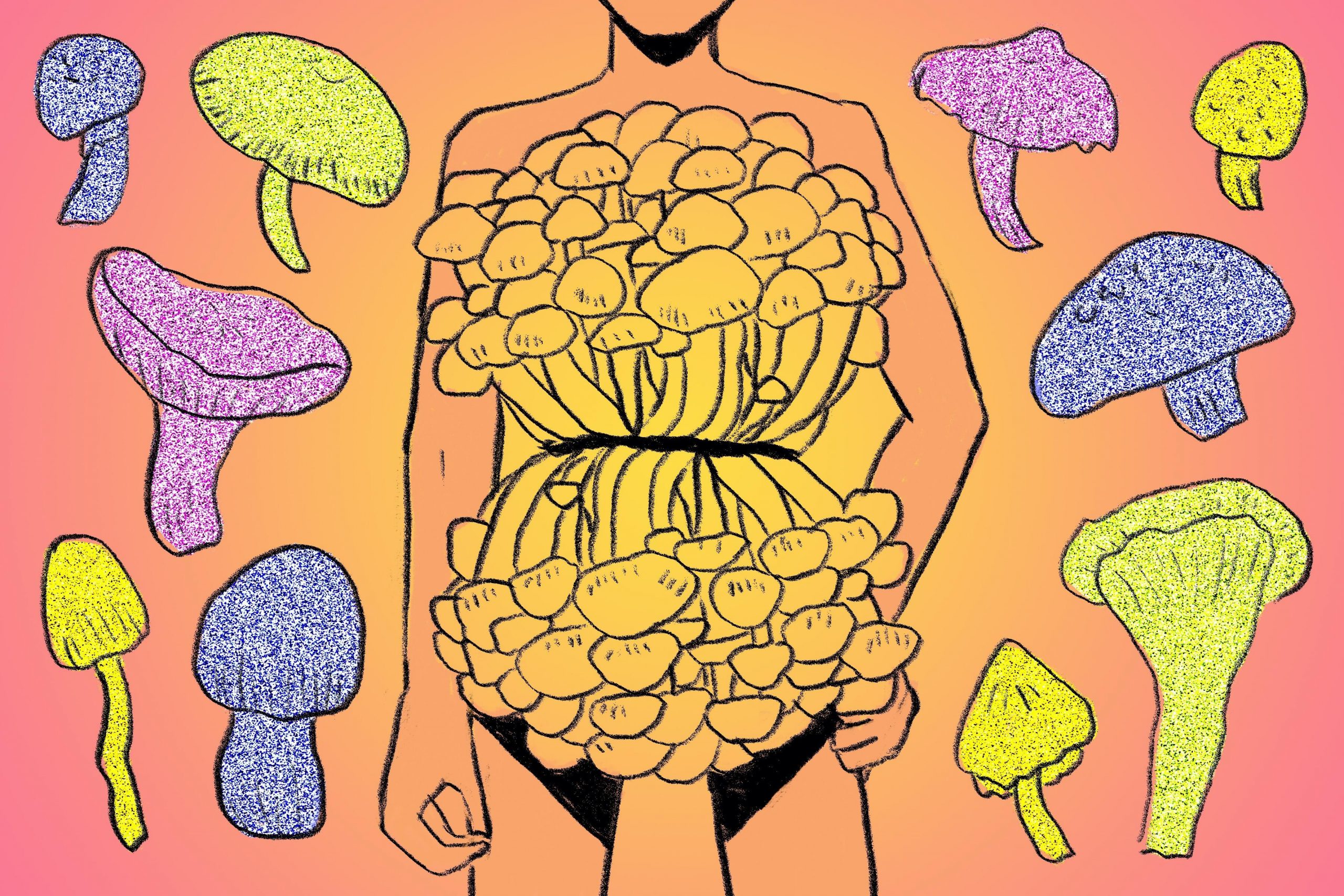Mushrooms are everywhere — no, actually, they’re everywhere. Fungi often form mutualistic partnerships with other organisms such as trees, particularly in forest ecosystems. Mushrooms themselves are actually the “fruits” of these fascinating species. The larger and more extensive network is in the form of single-cell strands called mycelium — and it’s all underground.
Recently, big name fashion houses like Marc Jacobs and JW Anderson have come out with lines inspired by, and often decorated with, mushrooms. Fashion designer Tony Ward came out with a Couture Fall Winter 2019/20 Haute Couture exhibition entirely inspired by mushrooms. The delicate layers of organza were meant to remind the audience of the thousands of featherweight gills located under the mushroom cap.
Alessandro Michele, the creative director for Gucci’s womenswear and menswear lines since 2015, has a passion for mushrooms. According to Michele, his most precious possession is a magic mushroom given to him by his partner, who received it from a shaman. This passion has found its way into the collection, so much so that Gucci has come out with a mushroom printed T-shirt.
So, why fungi? I have a few theories. Fungi have been around for hundreds of thousands of years, even before the dawn of civilization. According to a recent study by Steeve Bonneville from the Université libre de Bruxelles, the first mushrooms evolved on Earth between 715-810 million years ago. For perspective, the modern form of humans has existed on Earth for a mere 200,000 years. Whether we know it or not, fungi have been with us every step of the way as we’ve moved throughout history. Recently, fungi have had a resurgence in popularity. In the media, documentaries like “Fantastic Fungi” by Louie Schwartzberg have opened millions of minds to the physical and mental benefits of fungi for humans.
For me, mushrooms represent a new outlook on the way we live and conduct our lives. As I mentioned before, mushrooms often operate in mutualistic, or mutually beneficial, relationships with other organisms. They have seamlessly integrated themselves into tree root networks; they are nature’s decomposers, taking the nutrients from dead matter and returning it back to the soil. Perhaps high fashion houses can learn something or two from these amazing species.
The fashion industry is worth $2.5 trillion dollars. On top of that, they are not only one of the biggest polluters, but the second-largest consumer (industrially speaking) of water. Technically, most fabrics are made with cheap materials: Synthetics and polyesters are plastic, and plastic is derived from oil and petroleum production. Thus, when these materials are thrown away, they don’t break down. Instead, water sources become polluted by these toxic synthetic fibers.
This is why the sudden interest in mushrooms could potentially spark a sustainable revolution for the fashion industry. It is no secret that because of climate change, the next 10 years are critical in determining the future of our planet. We need to decarbonize by 2040, hopefully sooner. Mushrooms are the ideal role model for an industry that needs to mitigate its environmental impact. Using natural, biodegradable materials such as wool and cotton is a start. In early 2020, Nike declared that they would be dressing their Olympic athletes in uniforms made from recycled shoe parts. Sixty-two percent of Gen Z consumers, a recent study says, prefer to shop from sustainable brands. Seventy-two percent said that they were willing to pay more for said sustainable products.
Fashion often doesn’t get things right in a politically correct sense — you just have to look back to the Kent State sweatshirt that Urban Outfitters tried to sell in 2014. Perhaps this — sustainable wearables featuring an organism that has so much to teach us about how we can live eco-conscious lives on our planet — can be a turning point for the big fashion houses.

















